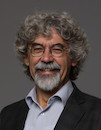Fundamentals of microelectronics
Data is displayed for academic year: 2023./2024.
Exercises
Course Description
Components of digital integrated circuits. Scaled MOS transistors. Short channel effects. Speed limitations of transistors. Memory cells. Image sensors. MOS capacitance. Charge coupled devices (CCD). Active pixel CMOS sensors. Image sensor technology. Active matrix display devices. Thin film transistors (TFT). TFT display integration. Introduction to analog integrated circuits. Basic integrated circuit design rules. Basic amplifier configurations. Stability of operational amplifiers and compensation. Design of one-stage and multi-stage operational amplifiers. Important operational amplifier configurations. Fully differential amplifier.
Study Programmes
University graduate
[FER3-HR] Audio Technologies and Electroacoustics - profile
Elective Courses
(1. semester)
(3. semester)
[FER3-HR] Communication and Space Technologies - profile
Elective Courses
(1. semester)
(3. semester)
[FER3-HR] Computational Modelling in Engineering - profile
Elective Courses
(1. semester)
(3. semester)
[FER3-HR] Computer Engineering - profile
Elective Courses
(1. semester)
(3. semester)
[FER3-HR] Computer Science - profile
Elective Courses
(1. semester)
(3. semester)
[FER3-HR] Control Systems and Robotics - profile
Elective Courses
(1. semester)
(3. semester)
[FER3-HR] Data Science - profile
Elective Courses
(1. semester)
(3. semester)
[FER3-HR] Electrical Power Engineering - profile
Elective Courses
(1. semester)
(3. semester)
[FER3-HR] Electric Machines, Drives and Automation - profile
Elective Courses
(1. semester)
(3. semester)
[FER3-HR] Electronic and Computer Engineering - profile
(3. semester)
[FER3-HR] Electronics - profile
Elective Courses
(1. semester)
(3. semester)
[FER3-HR] Information and Communication Engineering - profile
Elective Courses
(1. semester)
(3. semester)
[FER3-HR] Network Science - profile
Elective Courses
(1. semester)
(3. semester)
[FER3-HR] Software Engineering and Information Systems - profile
Elective Courses
(1. semester)
(3. semester)
Learning Outcomes
- Explain physical operation principles of advanced CMOS transistors
- Explain scaling of CMOS structures
- Analyze short-channel effects
- Explain physical operating principles of image sensors
- Distinguish the structure and electrical characteristics of flat-panel displays
- Explain the operation of basic building blocks of integrated circuits
- Analyze and design single-stage and multi-stage operational amplifiers
- Explain important configurations of operational amplifiers and their characteristics
- Explain DC, AC and transient specifications of operational amplifiers
- Analyze the stability and apply frequency compensation of amplifiers
Forms of Teaching
Lectures
Lectures
ExercisesTutorials
LaboratoryLaboratory
Grading Method
| Continuous Assessment | Exam | |||||
|---|---|---|---|---|---|---|
| Type | Threshold | Percent of Grade | Threshold | Percent of Grade | ||
| Laboratory Exercises | 0 % | 20 % | 0 % | 20 % | ||
| Mid Term Exam: Written | 0 % | 40 % | 0 % | |||
| Final Exam: Written | 0 % | 40 % | ||||
| Exam: Written | 20 % | 40 % | ||||
| Exam: Oral | 40 % | |||||
Week by Week Schedule
- Velocity saturation, Threshold voltage, Drain Induced Barrier Lowering (DIBL), Punchthrough
- Energy band diagram, Capacitance-voltage characteristics, Oxide charges, Body effect
- Charged Coupled Devices (CCD), Image sensor technologies, CMOS Active Pixel Sensors (APS), Data read-out and system integration
- Moore's law; Scaling rules, Electrostatic limitations, Physical limitations
- Advanced CMOS devices (FinFET, Ultra-thin body Double-gate), High-k, metal gate
- Carrier transport, Advanced materials (III-V CMOS, nano-tubes, graphene, Ge)
- Thin-film transistors, technology and characteristics, Structure and characteristics of Liquid Crystal Displays (LCDs), Structure and characteristics of Plasma Displays, Structure and characteristics of Organic LED Displays (OLEDs)
- Midterm exam
- Analog electronics, applications, challenges, comparison with digital electronics, NMOS and PMOS transistor structure, current-voltage characteristics, small-signal dynamic parameters, MOS transistor small-signal model, MOS and bipolar transistor comparison
- Noise in resistors, diodes, MOS and bipolar transistors, Amplifier noise figure
- Component mismatch, choosing component value and dimensions, Distortion, Amplifier bias networks, setting of transistor dimensions
- Amplifier small-signal analysis, gain, bandwidth, Amplifier design rules, choosing transistor dimensions, goals, limitations, Basic single-stage amplifier configurations, cascode amplifier
- Basic configurations of two-stage operational amplifiers, Amplifier stability analysis, dominant and non-dominant poles, zeros
- Design rules for maximum gain-bandwidth product, Three-stage amplifiers and design rules
- Final exam
Literature
(.), Willy M. Sansen, Analog Design Essentials, Springer, 2006.,
(.), R. Jacob Baker, CMOS Circuit Design, Layout, and Simulation, 3rd Edition, IEEE Press, 2010.,
For students
General
ID 222587
Winter semester
5 ECTS
L1 English Level
L1 e-Learning
45 Lectures
0 Seminar
15 Exercises
4 Laboratory exercises
0 Project laboratory
0 Physical education excercises
Grading System
87 Excellent
75 Very Good
62 Good
50 Sufficient


 Pristupačnost
Pristupačnost



